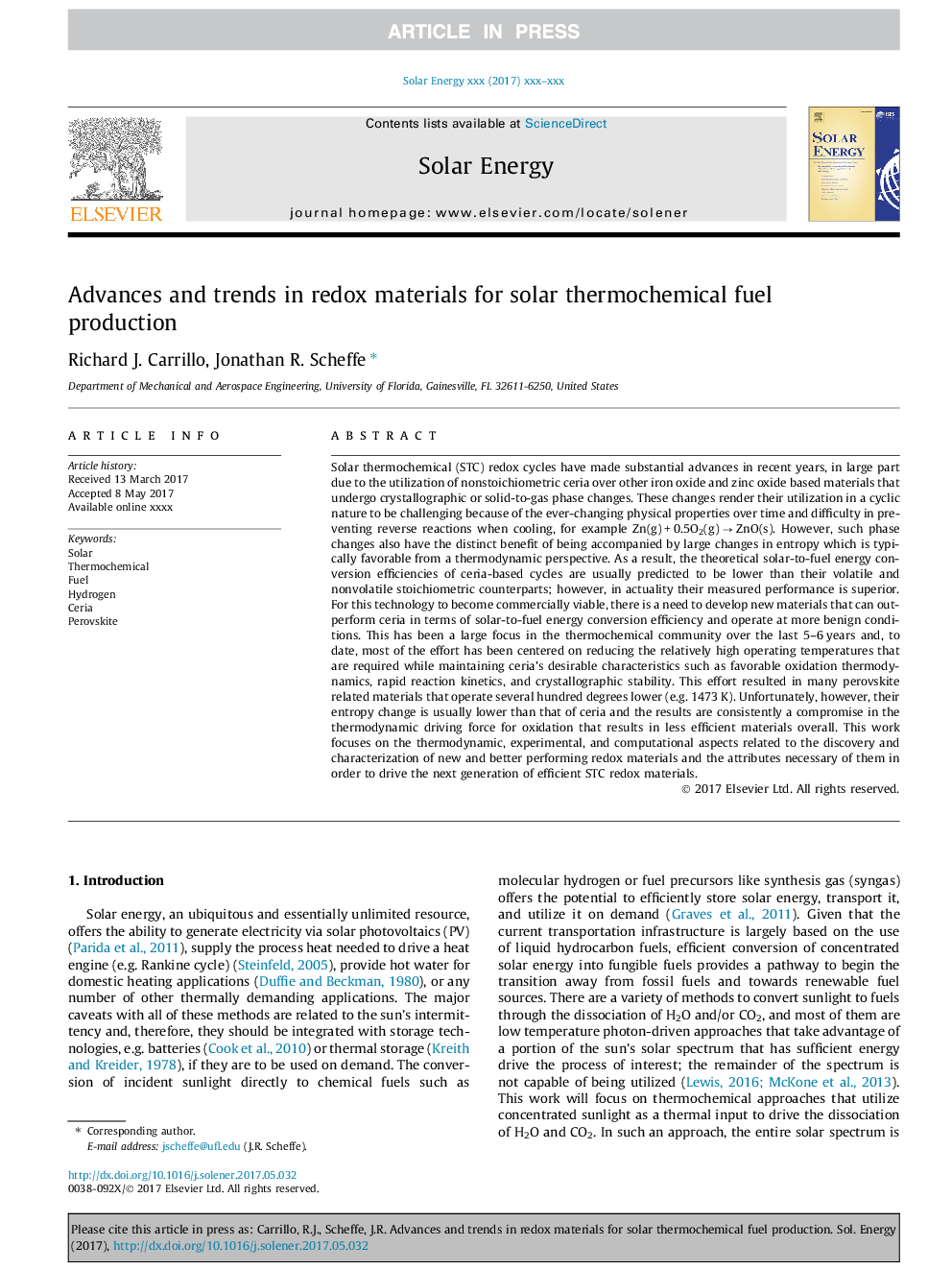| کد مقاله | کد نشریه | سال انتشار | مقاله انگلیسی | نسخه تمام متن |
|---|---|---|---|---|
| 7936300 | 1513062 | 2017 | 18 صفحه PDF | دانلود رایگان |
عنوان انگلیسی مقاله ISI
Advances and trends in redox materials for solar thermochemical fuel production
ترجمه فارسی عنوان
پیشرفت و روند مواد مجتمع برای تولید سوخت های ترمو شیمیایی خورشیدی
دانلود مقاله + سفارش ترجمه
دانلود مقاله ISI انگلیسی
رایگان برای ایرانیان
کلمات کلیدی
موضوعات مرتبط
مهندسی و علوم پایه
مهندسی انرژی
انرژی های تجدید پذیر، توسعه پایدار و محیط زیست
چکیده انگلیسی
Solar thermochemical (STC) redox cycles have made substantial advances in recent years, in large part due to the utilization of nonstoichiometric ceria over other iron oxide and zinc oxide based materials that undergo crystallographic or solid-to-gas phase changes. These changes render their utilization in a cyclic nature to be challenging because of the ever-changing physical properties over time and difficulty in preventing reverse reactions when cooling, for example Zn(g) + 0.5O2(g) â ZnO(s). However, such phase changes also have the distinct benefit of being accompanied by large changes in entropy which is typically favorable from a thermodynamic perspective. As a result, the theoretical solar-to-fuel energy conversion efficiencies of ceria-based cycles are usually predicted to be lower than their volatile and nonvolatile stoichiometric counterparts; however, in actuality their measured performance is superior. For this technology to become commercially viable, there is a need to develop new materials that can outperform ceria in terms of solar-to-fuel energy conversion efficiency and operate at more benign conditions. This has been a large focus in the thermochemical community over the last 5-6 years and, to date, most of the effort has been centered on reducing the relatively high operating temperatures that are required while maintaining ceria's desirable characteristics such as favorable oxidation thermodynamics, rapid reaction kinetics, and crystallographic stability. This effort resulted in many perovskite related materials that operate several hundred degrees lower (e.g. 1473 K). Unfortunately, however, their entropy change is usually lower than that of ceria and the results are consistently a compromise in the thermodynamic driving force for oxidation that results in less efficient materials overall. This work focuses on the thermodynamic, experimental, and computational aspects related to the discovery and characterization of new and better performing redox materials and the attributes necessary of them in order to drive the next generation of efficient STC redox materials.
ناشر
Database: Elsevier - ScienceDirect (ساینس دایرکت)
Journal: Solar Energy - Volume 156, 1 November 2017, Pages 3-20
Journal: Solar Energy - Volume 156, 1 November 2017, Pages 3-20
نویسندگان
Richard J. Carrillo, Jonathan R. Scheffe,
